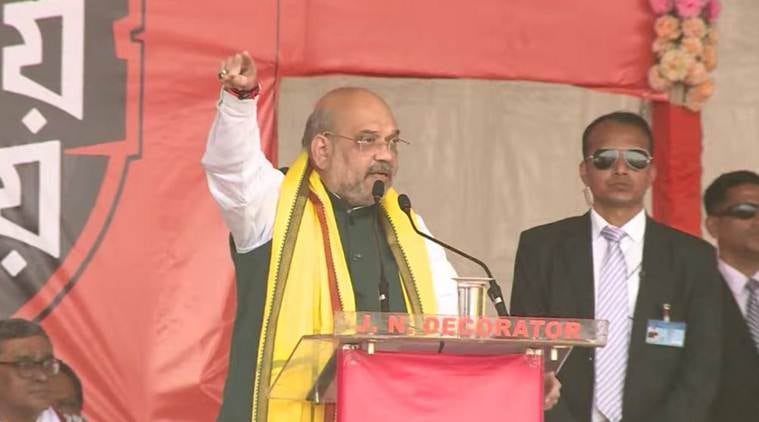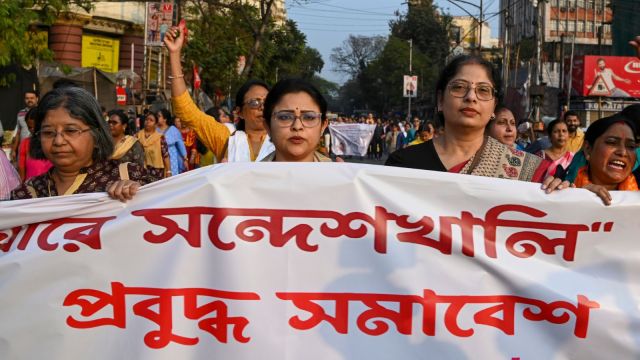By all accounts, West Bengal is entering the most decisive political battle since independence. The ruling BJP at the Centre, fresh off an emphatic Lok Sabha mandate and riding high on nationalistic fervour after a swift and successful military response to Pakistan’s recent provocations, has now turned its full attention to a state long seen as elusive and resistant: West Bengal.
Union Home Minister Amit Shah’s recent two-day visit was not a routine political tour—it was a signal. The BJP is going all out in its mission to uproot Mamata Banerjee’s Trinamool Congress (TMC), a party accused not only of governance failures but also of appeasement politics that has left large swathes of the Hindu majority in fear and despair.
The 2021 Assembly elections were brutal. They tore apart the social fabric, soaked the soil in blood, and pushed people into the jaws of a raging pandemic. Violence before, during, and after the polls was unprecedented. BJP workers were lynched, party offices were torched, and opposition supporters were hunted down. The media, too, was heckled into silence. And yet, TMC returned to power—largely because of the Congress party’s tactical retreat, which was masked under the pretense of Covid concerns.
Rahul Gandhi’s sudden decision to suspend campaigning—presented as a responsible pandemic-era gesture—was in reality a strategic cop-out. Congress quietly stepped aside, allowing Mamata Banerjee to consolidate the anti-BJP vote, fearing that a fractured opposition would only benefit Modi’s party. That move, in hindsight, did save the TMC from collapse.

Despite its energetic campaign, the BJP stumbled. The party banked entirely on Prime Minister Modi’s charisma. There was no chief ministerial face, no credible local leadership, and absolutely no understanding of Bengal’s cultural psyche. Hindi-speaking leaders shouted slogans like “Jai Shri Ram” in towns that speak Bangla, and they promised statues instead of solutions. The lower-middle-class Bengali, who spent ₹92 per litre on petrol to attend the BJP rallies under a scorching April sun, returned home disillusioned. The rhetoric was stale the vision was absent.
The BJP’s local cadre was in shambles. Much of its “strength” came from defectors—ex-TMC leaders who were parachuted into candidacies while old BJP karyakartas fumed. The result? Organizational chaos. As one insider quipped, “For every two BJP leaders, there are three factions.” The party won 77 seats, but not the soul of Bengal.
That was 2021. Today, the landscape is shifting. With the Congress reduced to a joke in Bengal—failing to win even a single seat last time and still fumbling under Rahul Gandhi and Mallikarjun Kharge’s direction—the BJP sees a clearer path. The 2024 Lok Sabha results reaffirmed BJP’s position as the single largest party in the country, bolstered by new allies and a resurgent Hindutva narrative.
This narrative now leans heavily on recent events. The short but decisive military action against Pakistan sent a message, not just to Islamabad, but to those within India who have long operated under the assumption that the majority Hindu voice can be bullied, dismissed, or ignored. The fear among radical elements is real and justified. India is no longer willing to tolerate extremism masquerading as minority rights.
This sentiment runs deep in Bengal, a state with a long history of communal scars. The horrors of the 1947 Bengal carnage, where thousands of Hindus were butchered, remain etched in public memory—even if mainstream historians and politicians have tried to whitewash them. The demographic transformation of certain districts through unchecked illegal immigration, primarily from Bangladesh, has only deepened the anxiety.

Against this backdrop, Mamata Banerjee’s defiance appears increasingly hollow. Accused of shielding infiltrators, ignoring court orders, and running a regime riddled with corruption and vendetta politics, the TMC faces serious anti-incumbency. The state High Court has repeatedly pulled up her government for lawlessness and inaction. Yet, the administration remains indifferent.
Her perceived hostility towards Hindus, selective law enforcement, and public endorsement of street violence have only sharpened the BJP’s attack lines. Even filmmakers have joined the fray—Vivek Agnihotri, of The Kashmir Files fame, has now announced a new project: The Bengal Files, which promises to expose the horrors of 1947 and the betrayal of Bengal by the Nehru-Gandhi combine.
The BJP, for once, is planning ahead. Shah’s Bengal mission is only the beginning. Prime Minister Modi and other senior leaders are expected to campaign aggressively, backed by a bolstered organizational structure, reenergized ground workers, and continued pressure from central agencies on illegal immigrants and terror-linked networks operating in the state.

The question now is not whether the BJP wants West Bengal—it certainly does. The question is: will Bengal rise to the occasion? Will the long-suffering majority, battered by waves of violence and appeasement, find the courage to vote without fear? Can the Hindu electorate—still reeling from decades of cultural erasure and administrative neglect—turn out in numbers that can overcome the ruling party’s muscle?
Much will depend on the Centre’s ability to keep law and order in check during the polls. Agencies like the NIA must stay active, vigilant, and unsparing in uprooting the networks that seek to destabilize the state’s demography. Without that, elections in Bengal may once again be decided not by votes, but by violence.
For the BJP, this is more than a state election—it is a historic opportunity to reclaim Bengal, the land of Vivekananda, Subhas Chandra Bose, and Syama Prasad Mookerjee, from the grip of ideological distortion and violent politics. A victory here would not only be strategic but symbolic—a declaration that Bengal, too, is part of the national mainstream, not a lawless frontier for political vendetta and demographic manipulation.
Whether the people of Bengal embrace that call will decide the course of history in 2026.




